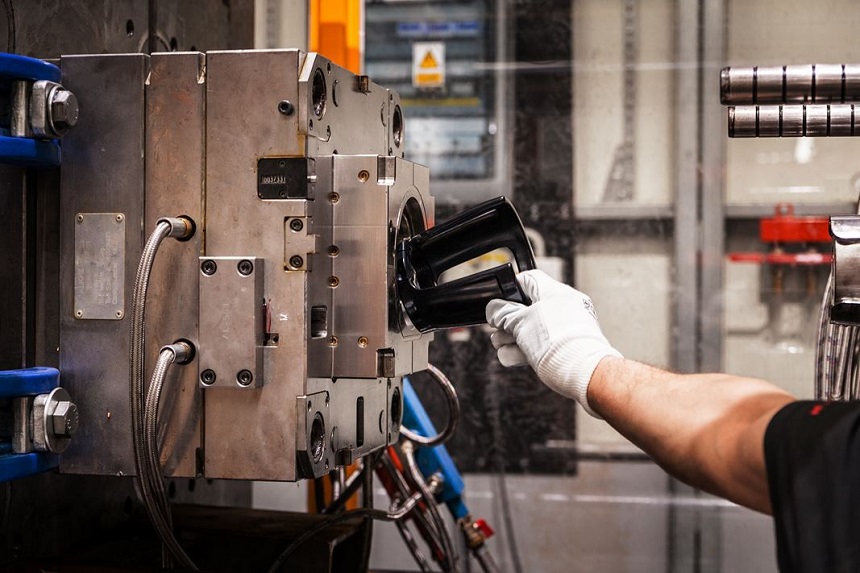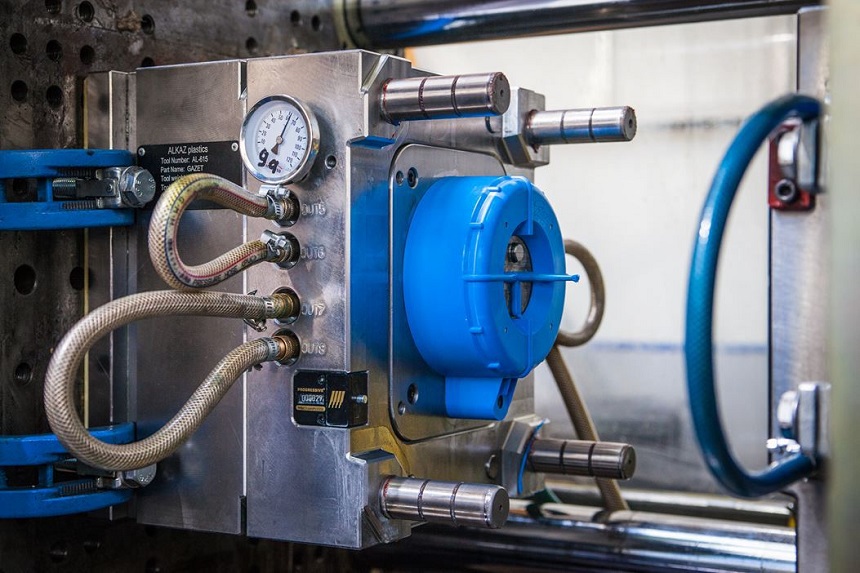How Plastic Injection Molding Works?

Injection molding is a process that involves melting raw plastic and injecting it into a mold. It is commonly used for manufacturing many types of plastic products. However, the process is very complex, and achieving the best results is essential. If you have ever wondered how plastic injection molding works, today is your lucky day. In this guide, we will discuss all the five steps of the process to help you understand it better. Let’s dig in!
A mold is a hollow metal block that serves as the main structure of an injection molding process. There are five steps in the plastic injection molding process, which are as follows:
Step 1: Choosing the Right Injection Mold & Thermoplastic
The first step in injection molding is to select the right thermoplastic. There are a number of materials that can be used, and each one has its own recommended pressure settings. This is important because the correct pressure helps the part form correctly.
Selecting the right mold and thermoplastic is crucial to the success of your product. There are a number of different types to choose from and selecting the wrong type could result in your product failing to perform. Fortunately, PTMS provides two distinct types of thermoplastics and can help you decide which material is best for your application.
One of the more useful functions of a thermoplastic is its ability to be remolded many times over. Another is its low weight and heat resistance, both of which make it a great choice for the automotive industry. In addition, its sturdiness makes it ideal for a number of other uses. Thermoplastic injection is a good choice for larger series production runs as well.
While it’s not the cheapest material on the block, polyethylene is one of the more durable materials in its class. This thermoplastic also boasts a high viscosity, which allows for complex molds to be made from it.
Step 2: Melting & Feeding the Thermoplastic
The Thermoplastic Injection and Molding (T.I.M.) process is the gold standard of the industrial manufacturing community. It isn’t cheap, but it sure is satisfying. Despite its high price tag, the resulting products are some of the most durable and reliable in their respective fields. Depending on your needs, you can pick from a wide array of polymers, polyurethanes, and resins. A well-rounded selection will allow you to customize your own parts to perfection. With the advent of the Internet, now you can even have your own online thermoplastic fabrication facility. Luckily, you will need not worry about the minute details such as maintenance, cleaning, and repairs. If you are looking for a low-cost, highly functional solution for your company’s prototyping, injection molding, and molding needs, get in touch with PTMS Tooling & Molding today.

Step 3: Injecting the Plastic into The Injection Mold
The most basic step of the plastic injection molding process is the injection of molten plastic material into the mold cavities. Injection is usually accomplished by using a hydraulic system in the machine. There are various factors that can influence this process.
Once you have decided on the type of thermoplastic, you will need to design your mold.
Usually, a mold is machined from steel, but CNC (computer numerical control) machines are also available. These are easier to manufacture and can withstand several thousand injection cycles.
Step 4: Holding and Cooling Time
Cooling and holding time is one of the most important steps in the injection molding process. This is because it plays an essential role in the performance and longevity of a plastic part.
Cooling time has a direct effect on cycle length. It can take a long time to cool a large object, but it does not take a long time to cool a small object. Typically, cooling accounts for 80% of the cycle’s overall length.
During the cooling phase, the polymer is cooled to below the thermal deformation temperature of the plastic. At the same time, the part is held in place to prevent backflow.
Step 5: Ejection and Finishing Processes
If you are creating plastic injection molded parts, you need to understand the steps in the process. Injection molding is a mass production process that produces a very high-quality part but requires a lot of skill. To prevent many of the most common defects, follow these guidelines to help you improve the overall results.
- The first step in the plastic injection molding process is clamping. This phase involves pushing the moveable platen and stationary platen against each other. It is necessary to have a tight-fitting mold to avoid any warping caused by an external force.
- Next, the material is heated. This heat is controlled by a reciprocating screw and electric motor. As the screw rotates, the plastic pellets travel forward. Once the material is pushed through a heated section, it enters the mold.

The Bottom Line
The plastic injection molding process consists of the five stages discussed in this blog. You can get the best injection molding done by PTMS. Contact us NOW!
